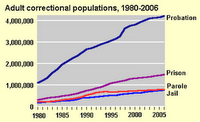 here’s a paid internship for an undergrad in minneapolis, passed along by a former student. there might even be some fun thesis/data collection possibilities here as well:
here’s a paid internship for an undergrad in minneapolis, passed along by a former student. there might even be some fun thesis/data collection possibilities here as well:
Uncategorized
CCP/SAFE Central is looking to hire a student intern to work on the 2008 National Night Out (NNO) campaign. Duties will include coordinating applications for street closure, making and responding to phone calls, counting and collating materials, helping plan aspects of the campaign and much more. This is a great chance to be part of Minneapolis’ award winning NNO campaign. Up to 30 hours per week; $10 per hour for undergrad. Must pass MPD background investigation, be a student more than 18 years old and commit to work steady hours from May to September, 2008. Very helpful to have a vehicle; mileage reimbursed. Office at 4119 Dupont Ave. N. Contact John Baumann, 612-673-3447 or john.baumann@ci.minneapolis.mn.us for more information.
 the more i learn about athletes and steroids, the more i think about merton’s classic social structure and anomie. in professional sport, the use of banned substances may well represent merton’s “triumph of amoral intelligence over morally prescribed “failure,” when the channels of vertical mobility are closed or narrowed in a society which places a high premium on economic affluence and social ascent for all its members.”
the more i learn about athletes and steroids, the more i think about merton’s classic social structure and anomie. in professional sport, the use of banned substances may well represent merton’s “triumph of amoral intelligence over morally prescribed “failure,” when the channels of vertical mobility are closed or narrowed in a society which places a high premium on economic affluence and social ascent for all its members.”
at the social-structural level, i could imagine differences across nations or leagues (wrestling, bicycle racing, football…) in the rates of deviation — and the extent to which cultural success goals are prized over the legitimized means to attaining them. at the individual level, i could imagine that pro baseball players might provide one of the few (only?) research settings in which a simple discrepancy score — aspirations minus expectations — would predict innovation in the form of performance-enhancing drug use.
i’m guessing there’s a more complicated network story here, too, but the basic test of merton might make for a nice thesis. more immediately, however, it might offer a nice final exam question on your crim theory final. consider yesterday’s lavelle e. neal strib profile of dan naulty. in my view, it provides fodder for an essay on merton and banned substances. here’s the lead:
Dan Naulty was a user of performance-enhancing drugs, stopping at nothing to reach the major leagues. He later became intoxicated by the lifestyle big-time baseball offered. He chased after the benefits, didn’t think about the means and certainly paid little attention to the consequences.
…He wasn’t the star player looking for the edge to become a superstar. He wasn’t the player barely holding on and looking for any edge. He was the one trying to make his break.
…”I was so young and dumb I didn’t think about anything except the light at the end of the tunnel,” Naulty said, “and that light was the fame that baseball was going to provide me.”
cultural success goals? check. goals/means disjuncture? check. you get the idea. there’s even a nice redemption script in this case:
Now the consequences mean more to Naulty, a former Twins pitcher who spent 1996-99 in the majors. The mental snapshot that pops up the most: the sight of Mike Trombley packing his bags in 1996 after being a late spring training cut. Naulty cheated his way onto the team while the popular and hard-working Trombley was misty-eyed over barely missing the cut. “I stole people’s jobs,” said Naulty…
today mr. naulty is pursuing his doctorate in theology, where the strains and success goals presumably differ from those of major league baseball. while professor merton might predict conformity under such circumstances, other schools of thought would suggest a different outcome. criminologists of the life-course-persistent ilk, for example, might identify mr. naulty as the seminarian most likely to be caught cheating on the ethics final.
though i remain optimistic about mr. naulty’s chance for redemption, i suspect that mike trombley would be less forgiving.
 the times and daily news are reporting on a subway sting operation by the new york police department. in my opinion, operation lucky bag reeks of entrapment — law enforcement practices that induce citizens to commit crimes they would otherwise have had no intent to commit. judge for yourself:
the times and daily news are reporting on a subway sting operation by the new york police department. in my opinion, operation lucky bag reeks of entrapment — law enforcement practices that induce citizens to commit crimes they would otherwise have had no intent to commit. judge for yourself:
The NYPD revealed Wednesday its Operation Lucky Bag stings have snared nearly 300 people – many of whom had no rap sheet before they fell for the ruse. Since the start of the year, there have been 100 arrests as a result of the decoy operations, in which an undercover officer “drops” a wallet, iPod or cell phone in a subway station and cops pounce after it’s picked up. Police said 58 of those busted had rap sheets, while 42 had clean records. There was a similar breakdown in 2006, when 188 were arrested. The NYPD said 101 had prior arrests while 87 did not.
worse still, good samaritans appear to be caught up in the sweep. isn’t there enough actual crime on the trains? if predatory robbery (or even pickpocketing or pursesnatching) is a big problem in this setting, i could reasonably imagine, say, a decoy operation in which officers pose as attractive targets. but dropping a bag and arresting the rider who picks it up? that’s just crimemaking.
-via boingboing
 When: Monday, Dec 10, 6pm – 8pm
When: Monday, Dec 10, 6pm – 8pm
Where: Augsburg College Chapel, SW Corner of 23rd Ave S and Riverside Ave S, Minneapolis, MN 55454
Description: Congressman Keith Ellison Presents a Voting Rights Forum Learn about current legislation that affects your right to vote. Joining Congressman Ellison will be a panel of experts and Minnesota Secretary of State Mark Ritchie Voting Rights Legislation Congressman Ellison has introduced: H.R. 2457: To amend the National Voter Registration Act of 1993 to require states to permit individuals to register to vote in an election for Federal Office on the date of the election. H.R. 4026 To prohibit election officials from requiring a photo ID as a condition for voting in a Federal election. This is a great opportunity to share information and begin a dialogue about solutions to protect the voting rights of American citizens as well as ways to expand democracy.
agenda:
Keith Ellison: Introduction
Overview of Bills introduced in Congress
1. HR 2457 – Same Day Registration
2. HR 4026 – Banning the use of Photo IDS to vote
3. 2nd Chance Act Felons Right to Vote
Mark Ritchie – voting rights as it pertains to Minnesota and the Secretary of State’s office.
David Schultz, Professor at the U of M- voter fraud.
Mark Halverson –Citizens for Election Integrity of Minnesota – Voting Machines and the importance of audits
Jonathan Maurer Jones (TakeAction Minnesota and Voting Rights Coalition Chair)-Caging and Voter Intimidation.
Christopher Uggen – Re-entry and voting. Ex felons rights and the importance of voting rights for ex-felons.
 the boston globe is running a chilling three-part series on prison suicide. though jail and prison suicide rates have declined since the 1980s, those working in or around correctional facilities will tell you that self-harm remains an all-too-common occurrence.
the boston globe is running a chilling three-part series on prison suicide. though jail and prison suicide rates have declined since the 1980s, those working in or around correctional facilities will tell you that self-harm remains an all-too-common occurrence.
notes such as this one, left by russ dagenais, raise as many questions as they answer. i discuss suicide notes as a data source in my sociology of deviance course, but the work i’ve seen generally approaches them from a psychological or psychiatric perspective. in my view, sociologists are best positioned to examine them from a structural or institutional perspective.
suicide notes contain personal cries for help or compassion, but some of these voices are also crying out for better health care, access to prescription drugs, or more humane living conditions. these latter concerns point to matters of social choice and public policy rather than (or in addition to) individualized problems, troubles, or pathologies. i don’t know for certain whether such a study would make for a good dissertation, but a solid historical or comparative analysis would contribute greatly to knowledge. by giving voice to those who left such notes behind, a sensitive study might also help do some good for current inmates.
simply put, those who write such notes are trying to tell us something important. here are two more examples from the globe series:
#1. Consider my life sentence paid in full, I have continued to complain to HSU about my headaches adn how I was reaching my tolerance but no one would listen, including psy services.
I did the only thing I felt I could do to stop my headaches. I have plan this for almost a month, there was no one I could ask for help without being put in worse conditions than I am in already. I can not continue to live each day with these headaches, I got tired of walking on egg shells just so I would not bring on a headache.
It really sucks that death is a better choice than living under the present prison conditions. I hope for the prisoners left behind things get better if not I fear I will be seeing a lot more of you. I have sent a copy of this out, so whoever reads this, make sure it is turned in, don’t lose your job over this. If I am dead, and I hope I am, I did this after the second round after 11:00 p.m.
-Glen Bourgeois.
#2. To: Internal Affair I can’t breath in this room — I just had surgery recently the Capt. on the First shift threaten to four point restrain me with a move team. I paralyzed I can’t fight any longer I’ll loose my mind if I’m beat again. I going crazy just being in here this long Don’t let this happen to nobody again.
-Anthony Garafolo
 heather hlavka sends word of Being Friends, Being Safe, Being Catholic, a new comic book by the new york archdiocese of the roman catholic church.
heather hlavka sends word of Being Friends, Being Safe, Being Catholic, a new comic book by the new york archdiocese of the roman catholic church.
two reactions:
1. the comic book seems like a bizarre but straightforward and well-intentioned effort to address real problems, including the sexual abuse of children by church officials.
2. sadly, this effort is unlikely to prevent any abuse. while a comic makes for a good sunday school conversation starter, it is absolutely no bulwark against a calculated power-play by an adult in a position of authority. worse, such efforts seem to imply that children are responsible for their own vulnerability — and that it is their responsibility to become more vigilant in protecting themselves. i hope that the archdiocese is informing priests of this “no-closed-door” policy and taking reasonable steps to enforce it.
 the department of Justice just issued its 2006 year-end numbers for u.s. prison, jail, probation, and parole populations:
the department of Justice just issued its 2006 year-end numbers for u.s. prison, jail, probation, and parole populations:
WASHINGTON – The U.S. adult correctional population — incarcerated or in the community — reached 7.2 million men and women, an increase of 159,500 during the year, the Justice Department’s Bureau of Justice Statistics (BJS) announced today in a new report. About 3.2 percent of the U.S. adult population, or 1 in every 31 adults, was in the nation’s prisons or jails or on probation or parole at the end of 2006.
i haven’t standardized by population yet, but the increases are non-trivial.
prison: 1,492,973, up 3.1% over year-end 2005
jail: 766,010, up 2.5%,
parole: 798,202, up 2.3%
probation: 4,237,023, up 1.7%
—————————————————————————–
total: 7,211,400, up 2.3% from 7,051,900 at year-end 2005
click for 1980-2006 trend data.
 after years of fits and starts, prisoner reentry programs are now blooming like tulips in springtime. i’m regularly getting calls and emails such as the one i’ve anonymized below, but i rarely have good advice to offer.
after years of fits and starts, prisoner reentry programs are now blooming like tulips in springtime. i’m regularly getting calls and emails such as the one i’ve anonymized below, but i rarely have good advice to offer.
Mr. Uggen,
My name is ___, and we are presently in contact with the director of Chaplain Services for [name] Penitentiary about starting a program to assist ex-offenders realize the potential that is within them and help them to develop that potential. This is something that is new to me, so I am not very knowledgeable about this matter, but my passion to assist in this matter will enable me to be able to help some. Then I want to talk with local Pastors to get more involved as well.
The reason that I am contacting you is because of the write up that you did with Mr. Manza on “The President Is Right: Ex-Felons Need Aid.” I was hoping that you could give me some insight that I may use to help in the re-entry of our fellow brothers and sisters in this to be successful in their efforts to re-enter society… If you have anything that you feel that will help us to be more effective, we will truly appreciate any kind of assistance you may be able to provide.
Thank you very much …
in response to such queries, i usually mention a few research studies and ex-prisoners’ needs for work and family support, but i rarely have any concrete program or funding suggestions. here are a few sites that might offer that sort of guidance:
1. the department of Justice now offers a helpful reentry site with a clickable map to access state and local resources.
2. reentry.net, a clearinghouse of materials for attorneys, social service providers, and policy reform advocates on reentry and the consequences of criminal proceedings.
3. john jay’s prisoner reentry institute reports on new research and offers resource lists.
4. the national governors association prisoner reentry policy academy.
5. the urban institute’s Justice impressive reentry research and roundtable discussions.
perhaps others might offer additional sites or ideas for starting reentry projects.
 adam liptak contributes another fine criminal Justice piece to today’s times, this time on the felony murder doctrine. felony murder rules treat any death occurring during the course of a felony as a first degree murder, with all participants in said felony subject to murder charges.
adam liptak contributes another fine criminal Justice piece to today’s times, this time on the felony murder doctrine. felony murder rules treat any death occurring during the course of a felony as a first degree murder, with all participants in said felony subject to murder charges.
the story details the case of ryan holle, who is serving a life sentence without possibility of parole. mr. holle lent his car to a friend who killed a young woman while attempting to steal a safe. mr. liptak’s article touches on several themes that might make for a productive discussion in a crim course: u.s. legal exceptionalism, life sentences for young people, the culpability of accomplices, general v. specific deterrence…
 the washington post and other media have publicized a new CDC panel report published in morbidity and mortality weekly. after comparing recidivism rates in six strong studies of youth transferred to the adult system with those of youth who stayed in the juvenile system, the authors conclude the following:
the washington post and other media have publicized a new CDC panel report published in morbidity and mortality weekly. after comparing recidivism rates in six strong studies of youth transferred to the adult system with those of youth who stayed in the juvenile system, the authors conclude the following:
Review of the effects of transfer laws on subsequent violence indicates that the experience of transfer to the adult criminal Justice system is associated with subsequent violence among juvenile participants when compared with violence among juveniles retained in the juvenile Justice system. In addition, little evidence supports the idea that transfer laws deter juveniles in the general population from violent crime… use of transfer laws and strengthened transfer policies is counterproductive to reducing juvenile violence and enhancing public safety.
hmm. though i’m sympathetic to the authors’ viewpoint and i really liked each of the studies cited in the report, i’m not completely convinced that they have cracked the problem of sample selection. this is a very difficult thing to do in this research setting, since kids are (literally) selected for transfer on the basis of their perceived dangerousness and likelihood of recidivism. here is the relevant passage on selectivity:
All of the included studies attempted to control for possible selection bias by restricting the cases under consideration to serious ones that would be eligible for transfer and by comparing the outcomes of cases transferred with those of cases retained in the juvenile system. In addition, they attempted to reduce selection bias by one of three methods: 1) by using statistical methods to control for factors that might affect transfer decisions (23–25); 2) by matching transferred and retained juveniles on background characteristics (26,27); or 3) by comparing the outcomes of juveniles matched on background demographics, economics, and crime characteristics, but in jurisdictions with difference transfer laws (28).
well, that’s a good start, i suppose. what were the results? of the six studies of transfer to the adult system, one found a deterrent effect, one found no effect, and four found widely varying estimates of increased violence or general crime. the cdc report did not discuss the suspected mechanisms for the deleterious effects of adult transfer, though i believe that the literature typically offers some variant of a brutalization hypothesis.
my sense is that transfer to the adult system probably does indeed increase recidivism and compromise public safety. that said, the specific selection criterion to get into the treatment group in these studies (predicted dangerousness) is uncomfortably close to the substantive outcome measure used to assess their effectiveness (violent recidivism). that’s why i’m not sure that the evidence is strong enough here to warrant definitive causal claims. perhaps it is safer to state the conclusion in the negative: after examining the best available studies on the subject, there is almost no evidence suggesting that adult transfer provisions reduce subsequent crime.
 the more i learn about athletes and steroids, the more i think about merton’s classic social structure and anomie. in professional sport, the use of banned substances may well represent merton’s “triumph of amoral intelligence over morally prescribed “failure,” when the channels of vertical mobility are closed or narrowed in a society which places a high premium on economic affluence and social ascent for all its members.”
the more i learn about athletes and steroids, the more i think about merton’s classic social structure and anomie. in professional sport, the use of banned substances may well represent merton’s “triumph of amoral intelligence over morally prescribed “failure,” when the channels of vertical mobility are closed or narrowed in a society which places a high premium on economic affluence and social ascent for all its members.”
at the social-structural level, i could imagine differences across nations or leagues (wrestling, bicycle racing, football…) in the rates of deviation — and the extent to which cultural success goals are prized over the legitimized means to attaining them. at the individual level, i could imagine that pro baseball players might provide one of the few (only?) research settings in which a simple discrepancy score — aspirations minus expectations — would predict innovation in the form of performance-enhancing drug use.
i’m guessing there’s a more complicated network story here, too, but the basic test of merton might make for a nice thesis. more immediately, however, it might offer a nice final exam question on your crim theory final. consider yesterday’s lavelle e. neal strib profile of dan naulty. in my view, it provides fodder for an essay on merton and banned substances. here’s the lead:
Dan Naulty was a user of performance-enhancing drugs, stopping at nothing to reach the major leagues. He later became intoxicated by the lifestyle big-time baseball offered. He chased after the benefits, didn’t think about the means and certainly paid little attention to the consequences.
…He wasn’t the star player looking for the edge to become a superstar. He wasn’t the player barely holding on and looking for any edge. He was the one trying to make his break.
…”I was so young and dumb I didn’t think about anything except the light at the end of the tunnel,” Naulty said, “and that light was the fame that baseball was going to provide me.”
cultural success goals? check. goals/means disjuncture? check. you get the idea. there’s even a nice redemption script in this case:
Now the consequences mean more to Naulty, a former Twins pitcher who spent 1996-99 in the majors. The mental snapshot that pops up the most: the sight of Mike Trombley packing his bags in 1996 after being a late spring training cut. Naulty cheated his way onto the team while the popular and hard-working Trombley was misty-eyed over barely missing the cut. “I stole people’s jobs,” said Naulty…
today mr. naulty is pursuing his doctorate in theology, where the strains and success goals presumably differ from those of major league baseball. while professor merton might predict conformity under such circumstances, other schools of thought would suggest a different outcome. criminologists of the life-course-persistent ilk, for example, might identify mr. naulty as the seminarian most likely to be caught cheating on the ethics final.
though i remain optimistic about mr. naulty’s chance for redemption, i suspect that mike trombley would be less forgiving.
 the times and daily news are reporting on a subway sting operation by the new york police department. in my opinion, operation lucky bag reeks of entrapment — law enforcement practices that induce citizens to commit crimes they would otherwise have had no intent to commit. judge for yourself:
the times and daily news are reporting on a subway sting operation by the new york police department. in my opinion, operation lucky bag reeks of entrapment — law enforcement practices that induce citizens to commit crimes they would otherwise have had no intent to commit. judge for yourself:
The NYPD revealed Wednesday its Operation Lucky Bag stings have snared nearly 300 people – many of whom had no rap sheet before they fell for the ruse. Since the start of the year, there have been 100 arrests as a result of the decoy operations, in which an undercover officer “drops” a wallet, iPod or cell phone in a subway station and cops pounce after it’s picked up. Police said 58 of those busted had rap sheets, while 42 had clean records. There was a similar breakdown in 2006, when 188 were arrested. The NYPD said 101 had prior arrests while 87 did not.
worse still, good samaritans appear to be caught up in the sweep. isn’t there enough actual crime on the trains? if predatory robbery (or even pickpocketing or pursesnatching) is a big problem in this setting, i could reasonably imagine, say, a decoy operation in which officers pose as attractive targets. but dropping a bag and arresting the rider who picks it up? that’s just crimemaking.
-via boingboing
 When: Monday, Dec 10, 6pm – 8pm
When: Monday, Dec 10, 6pm – 8pm
Where: Augsburg College Chapel, SW Corner of 23rd Ave S and Riverside Ave S, Minneapolis, MN 55454
Description: Congressman Keith Ellison Presents a Voting Rights Forum Learn about current legislation that affects your right to vote. Joining Congressman Ellison will be a panel of experts and Minnesota Secretary of State Mark Ritchie Voting Rights Legislation Congressman Ellison has introduced: H.R. 2457: To amend the National Voter Registration Act of 1993 to require states to permit individuals to register to vote in an election for Federal Office on the date of the election. H.R. 4026 To prohibit election officials from requiring a photo ID as a condition for voting in a Federal election. This is a great opportunity to share information and begin a dialogue about solutions to protect the voting rights of American citizens as well as ways to expand democracy.
agenda:
Keith Ellison: Introduction
Overview of Bills introduced in Congress
1. HR 2457 – Same Day Registration
2. HR 4026 – Banning the use of Photo IDS to vote
3. 2nd Chance Act Felons Right to Vote
Mark Ritchie – voting rights as it pertains to Minnesota and the Secretary of State’s office.
David Schultz, Professor at the U of M- voter fraud.
Mark Halverson –Citizens for Election Integrity of Minnesota – Voting Machines and the importance of audits
Jonathan Maurer Jones (TakeAction Minnesota and Voting Rights Coalition Chair)-Caging and Voter Intimidation.
Christopher Uggen – Re-entry and voting. Ex felons rights and the importance of voting rights for ex-felons.
 the boston globe is running a chilling three-part series on prison suicide. though jail and prison suicide rates have declined since the 1980s, those working in or around correctional facilities will tell you that self-harm remains an all-too-common occurrence.
the boston globe is running a chilling three-part series on prison suicide. though jail and prison suicide rates have declined since the 1980s, those working in or around correctional facilities will tell you that self-harm remains an all-too-common occurrence.
notes such as this one, left by russ dagenais, raise as many questions as they answer. i discuss suicide notes as a data source in my sociology of deviance course, but the work i’ve seen generally approaches them from a psychological or psychiatric perspective. in my view, sociologists are best positioned to examine them from a structural or institutional perspective.
suicide notes contain personal cries for help or compassion, but some of these voices are also crying out for better health care, access to prescription drugs, or more humane living conditions. these latter concerns point to matters of social choice and public policy rather than (or in addition to) individualized problems, troubles, or pathologies. i don’t know for certain whether such a study would make for a good dissertation, but a solid historical or comparative analysis would contribute greatly to knowledge. by giving voice to those who left such notes behind, a sensitive study might also help do some good for current inmates.
simply put, those who write such notes are trying to tell us something important. here are two more examples from the globe series:
#1. Consider my life sentence paid in full, I have continued to complain to HSU about my headaches adn how I was reaching my tolerance but no one would listen, including psy services.
I did the only thing I felt I could do to stop my headaches. I have plan this for almost a month, there was no one I could ask for help without being put in worse conditions than I am in already. I can not continue to live each day with these headaches, I got tired of walking on egg shells just so I would not bring on a headache.
It really sucks that death is a better choice than living under the present prison conditions. I hope for the prisoners left behind things get better if not I fear I will be seeing a lot more of you. I have sent a copy of this out, so whoever reads this, make sure it is turned in, don’t lose your job over this. If I am dead, and I hope I am, I did this after the second round after 11:00 p.m.
-Glen Bourgeois.
#2. To: Internal Affair I can’t breath in this room — I just had surgery recently the Capt. on the First shift threaten to four point restrain me with a move team. I paralyzed I can’t fight any longer I’ll loose my mind if I’m beat again. I going crazy just being in here this long Don’t let this happen to nobody again.
-Anthony Garafolo
 heather hlavka sends word of Being Friends, Being Safe, Being Catholic, a new comic book by the new york archdiocese of the roman catholic church.
heather hlavka sends word of Being Friends, Being Safe, Being Catholic, a new comic book by the new york archdiocese of the roman catholic church.
two reactions:
1. the comic book seems like a bizarre but straightforward and well-intentioned effort to address real problems, including the sexual abuse of children by church officials.
2. sadly, this effort is unlikely to prevent any abuse. while a comic makes for a good sunday school conversation starter, it is absolutely no bulwark against a calculated power-play by an adult in a position of authority. worse, such efforts seem to imply that children are responsible for their own vulnerability — and that it is their responsibility to become more vigilant in protecting themselves. i hope that the archdiocese is informing priests of this “no-closed-door” policy and taking reasonable steps to enforce it.
 the department of Justice just issued its 2006 year-end numbers for u.s. prison, jail, probation, and parole populations:
the department of Justice just issued its 2006 year-end numbers for u.s. prison, jail, probation, and parole populations:
WASHINGTON – The U.S. adult correctional population — incarcerated or in the community — reached 7.2 million men and women, an increase of 159,500 during the year, the Justice Department’s Bureau of Justice Statistics (BJS) announced today in a new report. About 3.2 percent of the U.S. adult population, or 1 in every 31 adults, was in the nation’s prisons or jails or on probation or parole at the end of 2006.
i haven’t standardized by population yet, but the increases are non-trivial.
prison: 1,492,973, up 3.1% over year-end 2005
jail: 766,010, up 2.5%,
parole: 798,202, up 2.3%
probation: 4,237,023, up 1.7%
—————————————————————————–
total: 7,211,400, up 2.3% from 7,051,900 at year-end 2005
click for 1980-2006 trend data.
 after years of fits and starts, prisoner reentry programs are now blooming like tulips in springtime. i’m regularly getting calls and emails such as the one i’ve anonymized below, but i rarely have good advice to offer.
after years of fits and starts, prisoner reentry programs are now blooming like tulips in springtime. i’m regularly getting calls and emails such as the one i’ve anonymized below, but i rarely have good advice to offer.
My name is ___, and we are presently in contact with the director of Chaplain Services for [name] Penitentiary about starting a program to assist ex-offenders realize the potential that is within them and help them to develop that potential. This is something that is new to me, so I am not very knowledgeable about this matter, but my passion to assist in this matter will enable me to be able to help some. Then I want to talk with local Pastors to get more involved as well.
The reason that I am contacting you is because of the write up that you did with Mr. Manza on “The President Is Right: Ex-Felons Need Aid.” I was hoping that you could give me some insight that I may use to help in the re-entry of our fellow brothers and sisters in this to be successful in their efforts to re-enter society… If you have anything that you feel that will help us to be more effective, we will truly appreciate any kind of assistance you may be able to provide.
Thank you very much …
1. the department of Justice now offers a helpful reentry site with a clickable map to access state and local resources.
5. the urban institute’s Justice impressive reentry research and roundtable discussions.
perhaps others might offer additional sites or ideas for starting reentry projects.
 adam liptak contributes another fine criminal Justice piece to today’s times, this time on the felony murder doctrine. felony murder rules treat any death occurring during the course of a felony as a first degree murder, with all participants in said felony subject to murder charges.
adam liptak contributes another fine criminal Justice piece to today’s times, this time on the felony murder doctrine. felony murder rules treat any death occurring during the course of a felony as a first degree murder, with all participants in said felony subject to murder charges.
the story details the case of ryan holle, who is serving a life sentence without possibility of parole. mr. holle lent his car to a friend who killed a young woman while attempting to steal a safe. mr. liptak’s article touches on several themes that might make for a productive discussion in a crim course: u.s. legal exceptionalism, life sentences for young people, the culpability of accomplices, general v. specific deterrence…
 the washington post and other media have publicized a new CDC panel report published in morbidity and mortality weekly. after comparing recidivism rates in six strong studies of youth transferred to the adult system with those of youth who stayed in the juvenile system, the authors conclude the following:
the washington post and other media have publicized a new CDC panel report published in morbidity and mortality weekly. after comparing recidivism rates in six strong studies of youth transferred to the adult system with those of youth who stayed in the juvenile system, the authors conclude the following:
hmm. though i’m sympathetic to the authors’ viewpoint and i really liked each of the studies cited in the report, i’m not completely convinced that they have cracked the problem of sample selection. this is a very difficult thing to do in this research setting, since kids are (literally) selected for transfer on the basis of their perceived dangerousness and likelihood of recidivism. here is the relevant passage on selectivity:
All of the included studies attempted to control for possible selection bias by restricting the cases under consideration to serious ones that would be eligible for transfer and by comparing the outcomes of cases transferred with those of cases retained in the juvenile system. In addition, they attempted to reduce selection bias by one of three methods: 1) by using statistical methods to control for factors that might affect transfer decisions (23–25); 2) by matching transferred and retained juveniles on background characteristics (26,27); or 3) by comparing the outcomes of juveniles matched on background demographics, economics, and crime characteristics, but in jurisdictions with difference transfer laws (28).
well, that’s a good start, i suppose. what were the results? of the six studies of transfer to the adult system, one found a deterrent effect, one found no effect, and four found widely varying estimates of increased violence or general crime. the cdc report did not discuss the suspected mechanisms for the deleterious effects of adult transfer, though i believe that the literature typically offers some variant of a brutalization hypothesis.
my sense is that transfer to the adult system probably does indeed increase recidivism and compromise public safety. that said, the specific selection criterion to get into the treatment group in these studies (predicted dangerousness) is uncomfortably close to the substantive outcome measure used to assess their effectiveness (violent recidivism). that’s why i’m not sure that the evidence is strong enough here to warrant definitive causal claims. perhaps it is safer to state the conclusion in the negative: after examining the best available studies on the subject, there is almost no evidence suggesting that adult transfer provisions reduce subsequent crime.
